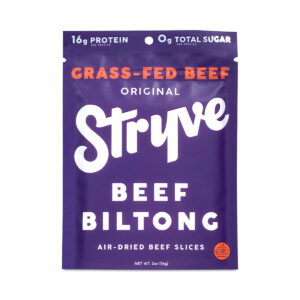- Understanding Local Produce
- Seasonal Grocery Shopping
- Supporting Local Farmers
- Tips for Sustainable Shopping
- Utilizing Community Resources
- Creating a Balanced Meal Plan
When it comes to grocery shopping, understanding local produce is essential for making informed choices that enhance both your health and community sustainability. Local produce is often fresher and more flavorful than items that have been shipped long distances. This not only supports better taste but also ensures that you’re getting more nutrients in your meals. Here’s how to navigate your grocery list with a focus on local foods.
Start by familiarizing yourself with what fruits and vegetables are in season in your area. For example, if you’re shopping in the summer, consider indulging in local berries, tomatoes, and zucchini. In the fall, root vegetables like carrots, beets, and squashes become the stars. You can often find this information online through local agricultural websites or your city’s farmers’ market schedule. Buying seasonal produce typically tends to be more budget-friendly as well.
Another benefit of buying local is that it helps reduce the carbon footprint involved in transporting goods. Look for farmers’ markets in your area or check your grocery stores for signs that indicate local produce. Often, organic foods that are grown locally are not only better for the environment but can be healthier as pesticides and harmful chemicals are minimized.
For vegan families, local farms often have options that directly cater to plant-based diets. Seek out farms that grow a variety of fruits and vegetables, or those that might even offer tofu or other plant-based products. When you shop at a local market, don’t hesitate to engage with the farmers; they can provide insights about their growing practices and tips on how to best prepare their products.
When you’re browsing online for local produce, ensure to verify the seller’s authenticity. Check for reviews, their organic certifications, and whether they source their products directly from farms. Safety is paramount—only purchase items from reputable vendors to avoid foodborne illnesses. To enhance your shopping experience, look for online platforms that provide transparency about their sourcing practices and the freshness of their goods.
As you’re planning your meals, consider creating a weekly shopping list based on what’s currently available in your area. Make a habit of looking for key items like leafy greens, cruciferous vegetables, and seasonal fruits. Incorporating these into your diet not only supports your health goals but also encourages you to experiment in the kitchen with new recipes.
Integrating local produce into your grocery shopping routine can enhance your meals, support your local economy, and contribute positively to the environment. Whether you’re shopping in-stores or online, keep these tips in mind, and enjoy the vibrant flavors of your community’s freshest offerings.
Seasonal Grocery Shopping
Seasonal grocery shopping is not just about selecting fruits and vegetables that are at their peak ripeness; it’s also about understanding the broader implications of choosing seasonal produce. Adjusting your grocery list according to what’s available in each season leads to numerous benefits, including improved taste, better nutrition, and a more sustainable approach to food consumption.
One primary advantage of seasonal shopping is taste. Produce that is allowed to ripen naturally before being harvested tends to have a richer flavor profile compared to out-of-season goods that may be picked prematurely. For instance, tomatoes that are harvested in the summer are far juicier and sweeter than those shipped in from far-off locations during winter months. This results in meals that not only look vibrant but also deliver an explosion of flavors that are memorable and satisfying.
Nutrition is another critical aspect closely tied to the seasonality of grocery shopping. Seasonal produce often comes with higher nutrient levels, as fruits and vegetables lose vitamins, minerals, and antioxidants shortly after harvest. Consuming what’s in season allows for a diet rich in various nutrients and a diverse intake of foods, which is vital for maintaining overall health.
| Season | Fruits | Vegetables | Health Benefits |
|---|---|---|---|
| Spring | Strawberries, Cherries | Asparagus, Spinach | Rich in antioxidants, aids digestion |
| Summer | Peaches, Watermelon | Tomatoes, Zucchini | Hydrating, high in vitamins A and C |
| Fall | Apples, Grapes | Squash, Brussels Sprouts | Boosts immunity, promotes heart health |
| Winter | Citrus (Oranges, Lemons) | Root Vegetables (Carrots, Beets) | High in fiber, combats winter colds |
Shopping in alignment with the seasons can also save you money. Seasonal produce tends to be more abundant, leading to lower prices. In contrast, out-of-season items often come with a premium price tag due to transportation and storage costs. You can maximize savings while enjoying the best that nature has to offer by planning your meals around what’s on sale that week based on the season.
Sustainable shopping practices are further reinforced through seasonal grocery shopping. When you buy in-season, you’re often supporting local farmers who utilize more sustainable agricultural practices. In contrast, out-of-season produce may necessitate long-distance transport that contributes to fuel consumption and greenhouse gas emissions. By choosing seasonal, locally-sourced fruits and vegetables, you’re inadvertently making a commitment to environmental responsibility.
Consider also that the act of engaging with local farmers’ markets can provide an invaluable educational component. Farmers often have unique knowledge about their crops that can guide you in selecting the best choices and preparing them in exciting new ways. This connection not only enriches your food experience but strengthens the community bond between consumers and producers.
Seasonal grocery shopping is a holistic approach that can enhance your culinary experience, support local agricultural efforts, and promote health and well-being. By understanding and planning around what’s in season, you make purposeful choices that resonate far beyond your kitchen, impacting both your health and your community’s sustainability.
Supporting Local Farmers

Supporting local farmers is an integral part of creating a sustainable food culture. When you prioritize purchasing from local farms, you not only gain access to fresher produce, but you also help sustain agricultural practices that benefit the community and environment. Eating local aligns your grocery shopping with a lifestyle that promotes health, supports the economy, and fosters a sense of community.
One effective way to support local farmers is by visiting farmers’ markets regularly. These markets often showcase not just fruits and vegetables but also local artisan products such as bread, honey, and handmade vegan cheeses. When shopping at farmers’ markets, engage with the vendors. Ask them about their growing practices, as many small farms use organic and sustainable methods that are better for the environment. Furthermore, by forming relationships with these farmers, you gain insights into what is in season and can receive advice on how best to prepare and cook their offerings.
Consider incorporating a variety of locally-sourced foods into your diet. For those aiming for a balanced plate, make an effort to include seasonal vegetables that are packed with nutrients and flavor. For example, in the spring, add fresh asparagus and peas to stir-fries, while summer can feature bright heirloom tomatoes and cucumbers in salads. Not only do these seasonal selections taste amazing, but they also encourage you to experiment with different cuisines and preparation methods.
If time is of the essence for busy professionals, consider forming a community buying group with neighbors or coworkers. This allows you to pool resources and place bulk orders directly from local farms for vegetables, grains, and proteins. Such collaborations can lead to significant savings and ensure that you have a steady supply of fresh produce at home, minimizing the need for frequent trips to larger grocery stores.
For vegan families, many farmers offer plant-based options, which can include everything from fresh produce to locally-made vegan snacks. Support farms that grow a diverse range of fruits and vegetables or those that specialize in organic nut milks and plant-based dairy alternatives. Sourcing these products locally ensures great quality and often means fewer preservatives—beneficial for your health and the planet.
As you navigate your grocery shopping, it’s crucial to be mindful of food safety, especially when buying directly from farmers. Always inspect fruits and vegetables for quality—look for vivid colors and no signs of spoilage. When purchasing from markets, ensure that meat and dairy products are kept at safe temperatures, and confirm that any prepared foods adhere to hygiene standards.
Online shopping for local foods has become increasingly popular. If you opt for this convenience, be sure to choose reputable platforms that showcase local farms and their products. Check for customer reviews and certifications, and look for detailed descriptions about sourcing practices and freshness. Such diligence helps safeguard against foodborne illnesses and ensures you’re making safe selections.
Navigating the grocery shopping landscape by supporting local farmers not only enriches your diet but also strengthens the fabric of your community. The next time you step out to shop, prioritize local options and see how your choices can lead to positive impacts both on your plate and within your neighborhood.
Tips for Sustainable Shopping
Making sustainable shopping choices can significantly impact your health and the environment. Start by opting for reusable bags instead of single-use plastic ones. This small switch can reduce plastic waste significantly over time. Bring these bags with you to the store and remember to keep a few in your car for when you forget. Also, consider using reusable produce bags for fruits and vegetables, which help eliminate additional plastic packaging.
When you’re at the grocery store, focus on products that are sustainably sourced and environmentally friendly. Look for labels that indicate organic, locally grown, or fair trade. These certifications often signify that the products have been produced with higher standards for environmental stewardship and ethical practices. It’s also beneficial to choose bulk items when possible, as this reduces packaging waste and often provides cost savings.
Buying in bulk can extend beyond pantry staples; consider purchasing larger quantities of seasonal produce. You can freeze or preserve excess fruits and vegetables when they are at their peak freshness to enjoy later. Canning, freezing, or drying produce not only helps reduce waste but allows you to savor local flavors long after the harvest season has ended.
Being mindful of food waste is another essential aspect of sustainable shopping. Plan your meals in advance and create a shopping list based on what you need for the week. This prevents overbuying and ensures that food doesn’t go to waste. If you have leftovers, try to repurpose them into new meals or composting scraps to return nutrients to the earth—this minimizes landfill contributions and enriches the soil.
Your food storage methods can also play a crucial role in sustainability. Invest in glass containers with airtight lids to store leftovers, reducing the need for plastic wrap or single-use containers. This not only preserves the freshness of your food longer but also minimizes harmful chemicals that may leach from plastic. In addition, storing foods at the right temperatures helps maintain their quality and reduces spoilage.
“The greatest danger in times of turbulence is not the turbulence; it is to act with yesterday’s logic.” – Peter Drucker
Consider the social aspect of sustainable shopping as well. Some grocery stores and co-ops may offer programs that allow customers to contribute to community-supported agriculture (CSA) initiatives. By supporting a local CSA, you’ll receive a share of the harvest in the form of a weekly or bi-weekly delivery, which encourages a sustainable model for farming that benefits both consumers and farmers. This approach also helps you try new and possibly unfamiliar seasonal produce, broadening your culinary horizons.
Lastly, be an advocate for sustainable practices by sharing your experiences with friends and family. Engage them in discussions about the importance of supporting local businesses, reducing waste, and making conscious food choices. Your passion can inspire others to follow suit, creating a ripple effect that strengthens community bonds and promotes collective environmental responsibility.
Incorporating these sustainable shopping tips into your routine not only enhances your own health and culinary experiences but contributes to a more sustainable future for the environment. By being mindful of your purchases, you become an active participant in creating positive change in your community and beyond.
Utilizing Community Resources

Utilizing community resources is an essential part of enhancing your grocery shopping experience and connecting with the local food network. Start by exploring community gardens, which not only provide fresh produce but also serve as a hub for education and collaboration among residents. Many cities have established these gardens to promote sustainable practices and encourage neighbors to grow their own fruits and vegetables. Participating in such initiatives fosters a sense of belonging while offering you the opportunity to learn more about gardening and local agriculture.
Another valuable resource is local food banks or pantries, which often have partnerships with local farms and growers. They frequently distribute surplus produce, providing access to fresh food for those in need. Volunteering your time at these organizations can deepen your understanding of local food systems while supporting your community’s health. Additionally, many food banks have programs that focus on nutrition education and cooking workshops, equipping individuals with the skills to prepare healthy meals at home.
Consider seeking out food co-ops in your area, which operate on a model that emphasizes local sourcing and community support. Co-ops typically have a diverse selection of organic and locally-produced goods, often at lower prices compared to traditional grocery stores. Joining a co-op can enhance your shopping experience by fostering relationships with other community members who share a passion for sustainable eating practices.
Social media platforms are also a fantastic way to tap into community resources. Local food groups often share information about farmers’ markets, upcoming events, and seasonal produce availability. Engaging with these online communities can broaden your knowledge and introduce you to new local food producers or chefs who may offer unique experiences such as cooking classes featuring local ingredients.
Visit local colleges or universities, which may host agricultural programs that support community outreach. Many institutions have student-led initiatives that focus on sustainability and food education. Attending workshops or lectures can provide insights into local food issues and inspire you to incorporate more sustainable practices into your grocery shopping.
As you explore these community resources, think about how you can contribute to and benefit from a more interconnected local food system. Engaging with what’s available around you not only enhances your nutritional choices but also builds resilience and support within your community.
- What are community gardens, and how can I get involved?
- Community gardens are shared spaces where individuals come together to grow vegetables and fruits. You can usually get involved by contacting your local gardening association or city parks department to find a nearby garden that welcomes new members.
- How can I find local food banks or pantries?
- Local food banks or pantries can easily be found through online searches or by visiting websites like Feeding America. They often need volunteers and donations, making it a great way to contribute to your community while gaining insight into local food systems.
- What benefits do co-ops offer compared to regular grocery stores?
- Co-ops usually prioritize local and organic products, often at more competitive prices. They also focus on community involvement and education, providing opportunities to connect with local producers and learn about sustainable practices.
- How can social media be used to learn about local food resources?
- Social media platforms host various community groups and pages dedicated to local food initiatives, such as farmers’ markets and food co-ops. Joining these groups allows you to stay informed about events, seasonal produce availability, and local growers.
- Can universities contribute to local food sustainability?
- Yes, many universities have programs that aim to promote sustainability and community engagement. They may offer workshops, lectures, or hands-on experiences focused on local agriculture and environmental stewardship.
- What types of workshops might local food banks offer?
- Local food banks often provide nutrition education, cooking workshops, and meal prep sessions to help individuals make the most of the food they receive. These workshops focus on teaching skills to prepare healthy meals using available resources.
- How do community resources influence my grocery shopping decisions?
- By utilizing community resources, you gain access to fresher, locally-sourced produce and enhance your knowledge of food sustainability. This awareness not only improves your shopping habits but also helps strengthen local economies and foster a sense of community.
Creating a Balanced Meal Plan
Creating a balanced meal plan is the cornerstone of effective grocery shopping and healthy eating. It allows you to organize your meals, reduce food waste, and maintain a nutritious diet while accommodating busy lifestyles, dietary preferences, and budget constraints. An effective meal plan considers the variety of food groups—fruits, vegetables, grains, proteins, and dairy (or plant-based alternatives)—ensuring that you and your family receive all essential nutrients necessary for overall health and wellness.
To begin, assess your weekly schedule. Identify days and meal times when you will have the most time to cook and those when you may need quick, easy meals. This assessment enables you to tailor your meal plan to fit your lifestyle appropriately. For instance, if Wednesdays are typically hectic, plan for a simple meal like a stir-fry or a one-pot dish using local, seasonal vegetables and a protein source like beans or tofu.
When creating your meal plan, keep the following tips in mind:
- Incorporate Variety: Aim for a range of foods, not just to prevent boredom but also to support nutrient intake. Rotate ingredients weekly—try kale one week and spinach the next, or quinoa versus brown rice. Use seasonal produce, which is often fresher and more affordable, to inspire unique meals.
- Batch Cooking: Designate a day, like Sunday, for prepping meals. Cook larger portions of grains, and legumes, or roast a big batch of vegetables. This will save time during your busy week and provide versatile ingredients that can be mixed and matched in different meals.
- Make Use of Leftovers: Plan meals that can be transformed into new dishes. For example, roasted vegetables can be tossed into a salad or blended into a soup. Leftover grains can serve as a base for stir-fries or grain bowls. This strategy enhances variety and ensures that nothing goes to waste.
- Involve the Family: Get everyone in the family involved in planning meals and grocery shopping. This not only teaches children about nutrition and healthy choices but also encourages them to try new foods. Have a family night where everyone suggests one dish for the week.
Budget-conscious shoppers can benefit from planning around sales and available seasonal items. Before finalizing your meal plan, peruse the weekly ads for your local grocery store. Many supermarkets offer discounts on items that are in-season or local, enabling you to save while sourcing fresh ingredients. Also, consider incorporating budget-friendly staples like beans, lentils, and whole grains into your meals. These options are surprisingly versatile, high in protein, and can stretch your dollar.
For those who prefer vegan options, ensure you include a variety of plant-based proteins such as chickpeas, edamame, or lentils. Pair these proteins with whole grains like quinoa or brown rice and a colorful array of vegetables for balanced meals rich in fiber and essential nutrients.
Online shopping can complement your meal planning: If you opt for groceries online, many services allow you to filter by dietary restrictions or preferences. This can streamline the process of finding organic or vegan products, making it easier to curate meals that fit your lifestyle. When utilizing online resources, always check ratings and reviews of sellers to ensure food safety and avoid subpar ingredients. This is crucial for ensuring you receive high-quality products, whether you’re purchasing fresh produce or packaged goods.
As you develop a balanced meal plan, remember to make it adaptable. Life can often throw unexpected events your way, so create meals that keep well and can easily be adjusted based on what your family enjoys or what is on hand. Having flexibility in your meal plan allows you to embrace creativity in the kitchen while maintaining a focus on health and longevity. Approach your grocery shopping with a plan that nourishes your body, supports your budget, and aligns with your family’s tastes and busy life.
New Customers Offer!
Free Gift for the new customer
$24 Value, When You Subscrib Visit Thrive Market












